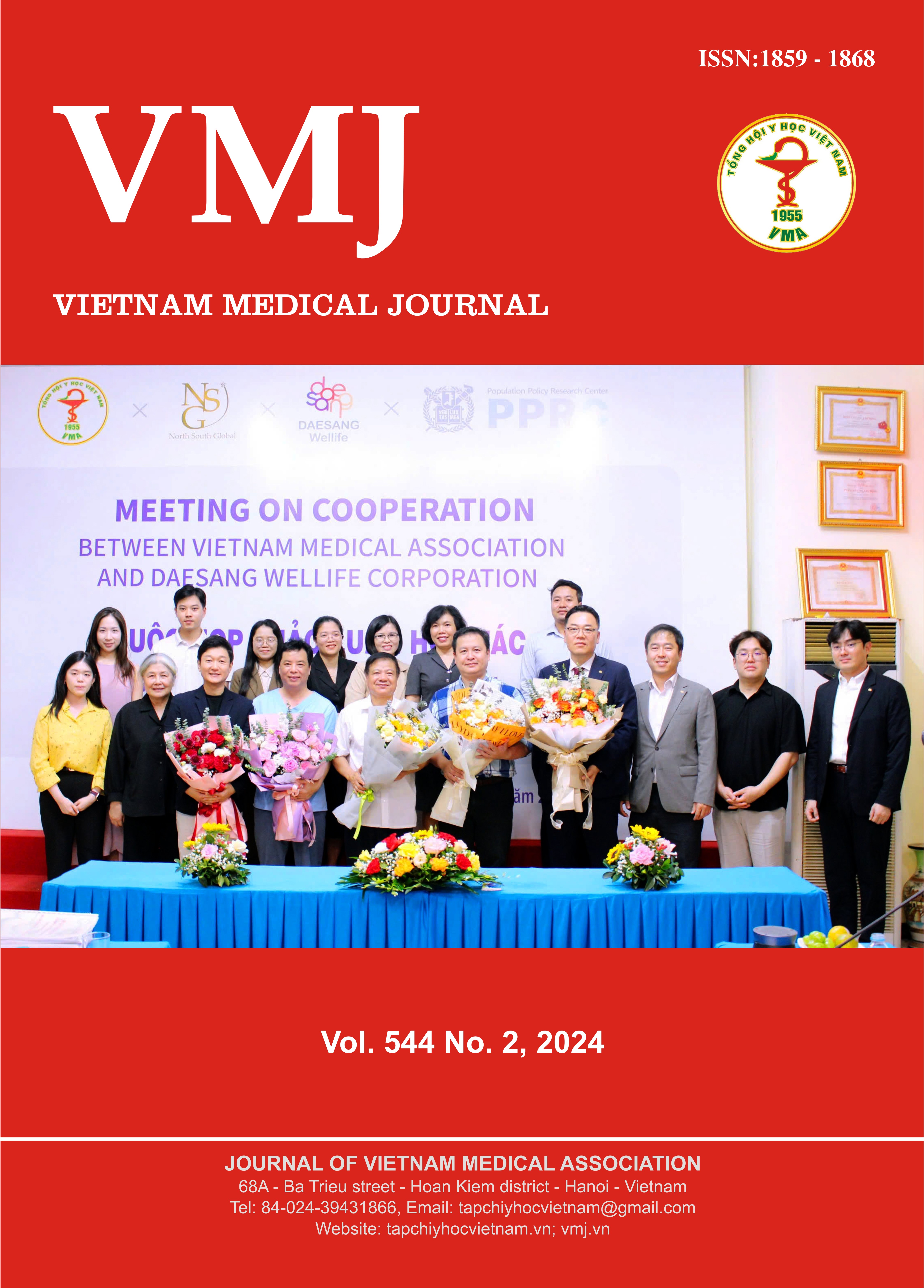ASSOCIATION BETWEEN BODY MASS INDEX AND STOOL QUALITY IN PRESCHOOL CHILDREN FROM NORTHERN VIETNAM
Main Article Content
Abstract
Introduction: Malabsorption, marked by impaired nutrient absorption, affects both macronutrients and micronutrients, leading to deficiencies and gastrointestinal (GI) symptoms. Constipation, a prevalent GI issue in children, increasingly impacts pediatric nutritional health, affecting both weight and height and influencing long-term development. This study investigates the correlation between body mass index (BMI) and stool quality in children, aiming to inform nutritional interventions in preschoolers in Northern Vietnam.. Methods: A stool sample survey of over 285 children aged 2-5 years from a preschool in Northern Vietnam in 2023 was conducted. Child weight, height, and BMI were analyzed with means and standard deviations, and chi-square tests were employed for correlation analysis with gender, ages and stool via SPSS 20. Results: The study included 52% male and 48% female participants.. The proportion of children with a BMI between 13,5-16,5 was 76%, accounting for a larger proportion. Gender, age, and stool quality showed no statistically significant relationship. However, a significant correlation was found between BMI and stool quality. Children with normal BMI had better stool quality compared to children at risk of obesity or underweight. Conclusions: While a significant relationship between BMI and stool quality was identified, further research, including larger cohort studies and clinical trials, is needed to support weight management strategies for children.
Article Details
Keywords
Body mass index (BMI), children, stool
References
2. Aro P, Ronkainen J, Talley NJ, Storskrubb T, Bolling-Sternevald E, Agréus L. Body mass index and chronic unexplained gastrointestinal symptoms: an adult endoscopic population based study. Gut 2005; 54: 1377–1383.
3. Bharucha AE, Pemberton JH, Locke GR 3rd. American Gastroenterological Association technical review on constipation. Gastroenterology 2013; 144: 218–238.
4. Forootan M, Bagheri N, Darvishi M. Chronic constipation: a review of literature. Medicine (Baltimore) 2018; 97: e10631.
5. Pourhoseingholi MA, Kaboli SA, Pourhoseingholi A, et al. Obesity and functional constipation; a community-based study in Iran. J Gastrointestin Liver Dis 2009; 18: 151–155.
6. Sandler RS, Jordan MC, Shelton BJ. Demographic and dietary determinants of constipation in the US population. Am J Public Health 1990; 80: 185–189.
7. Talley NJ, Quan C, Jones MP, Horowitz M. Association of upper and lower gastrointestinal tract symptoms with body mass index in an Australian cohort. Neurogastroenterol Motil 2004; 16: 413–419.
8. Talley NJ, Howell S, Poulton R. Obesity and chronic gastrointestinal tract symptoms in young adults: a birth cohort study. Am J Gastroenterol 2004; 99: 1807–1814.


